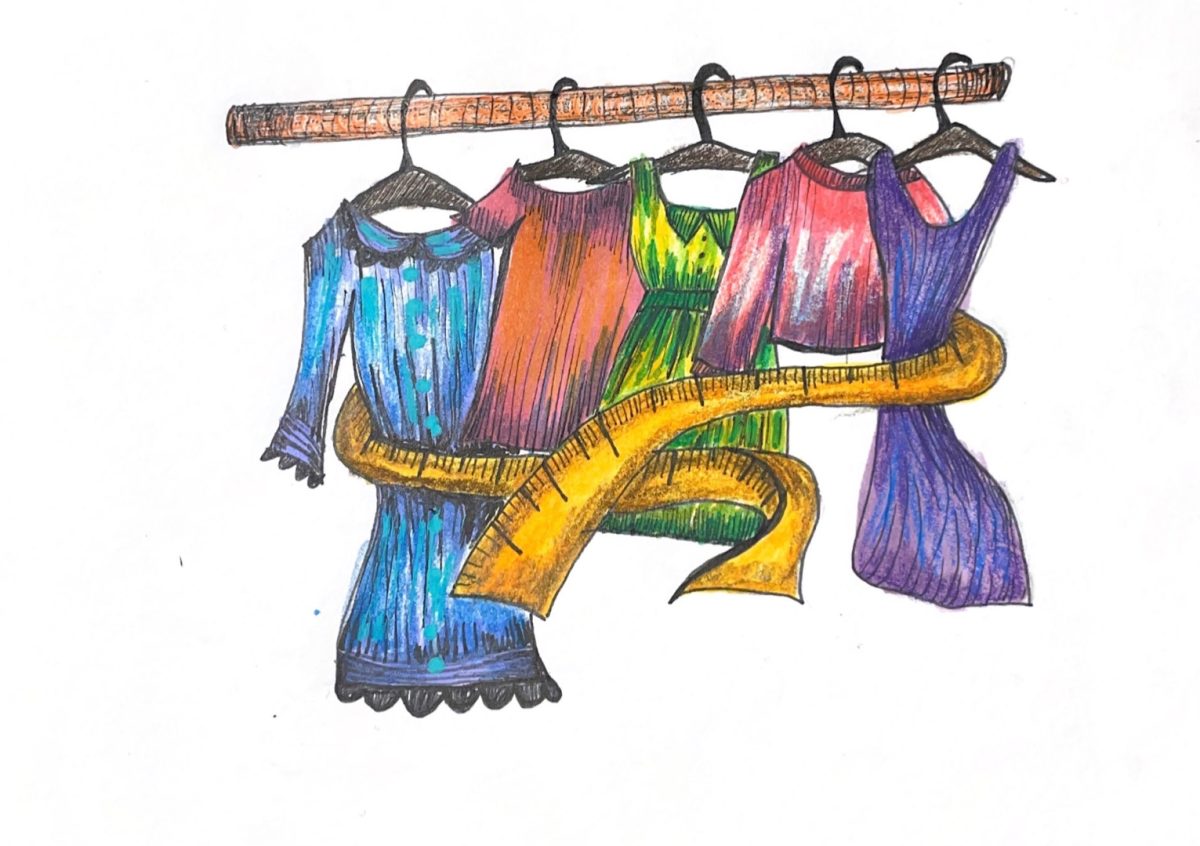Years ago, when I first had the privilege of going to the “cool” clothing stores at the mall, I was dismayed by the struggle of finding something that actually fit me.
I’ve always been abnormally thin: in middle and high school, it drove me crazy that my leggings were always slightly loose and mom jeans just didn’t look quite right on me.
At the same time, my best friend in school confided in me that being labeled “plus-size” felt embarrassing and that she had trouble finding clothes.
The truth is, we were both victims of a not-so-new phenomenon called vanity sizing.
Vanity sizing, or the labeling of clothing items with smaller sizes than they are actually cut, is a move made by brands to increase product sales, according to a July 2013 Forbes article.
The change in clothing size labeling is quite dramatic: a size 12 in 1958 is today’s size 6, despite the actual cut being the same, according to a Dec. 2016 Time Magazine article.
This difference in sizing coincides with an increased average weight among American men and women. The average weight of American adults, for example, has increased by around 20 pounds since the 1990s, according to an Aug. 3 2016 CBS News article.
Theoretically, a customer wouldn’t care about the size label, since what’s important is the actual fit of the product. However, it’s normal to be a little vain.
As a result of our society prizing thinness, it’s natural for our self-esteem to be a little boosted when the clothing tag says a smaller size.
Retailers capitalize on this, creating a line of products that boosts our self-esteem when we are consistently a smaller size than usual. We get an edge of confidence, and they get more profit.
In reality, vanity sizing causes a deeply negative view of one’s body and the fashion industry needs to stop, according to a March 6, 2021 Metro article.
Body dysmorphia is becoming a more common issue in today’s society. Around 53% of 13-year-old girls report feeling “unhappy with their bodies,” and the number grows to 78% when they reach age 17, according to the National Organization for Women.
This feeling of discontent leads to 15% of women suffering from intense eating disorders, according to the same report.
It’s not uncommon for people to set number-based goals in the weight loss journey, such as wanting to get down to a specific size. This becomes difficult and unhealthy, especially considering that society’s definition of the “ideal size” is always changing.
The regulation of clothing size labels, in the form of a standard size chart followed by all companies, would increase body confidence in consumers as well as ease the shopping process.
It is common to hear of brands “running big” or “running small” in reference to how a brand adjusts their sizing chart to “represent” their audience.
However, this inconsistency leads to an average 37% return rate due to “incorrect sizing information,” according to a March 13, 2018 Fashion Network article.
Having a standard set of sizes spanning all body types would make the shopping experience much easier, as well as more enjoyable and confidence-boosting. All companies would be mandated to follow the same expanded labeling system.
Those specifically seeking out petite or plus-size lines would be able to find clothes that make them feel confident, as well as less segregated from the perceived “regular-sized” lines.
The truth is that what the industry advertises as “plus-size” is actually just a normal, healthy size range; 67% of people identify as plus-size, according to an Aug. 21 CNN article.
The concept of an expanded, standardized sizing chart is a solution being brought up across the globe.
In Uruguay, the “Law of Sizes” was presented to the legislature by a group of women in order to revive clothing as a form of self-expression and art, as well as a way to improve mental health, according to a Sept. 8, 2022 Women’s Media Center article.
It is important to be aware that your favorite brands may size their products inaccurately. H&M, Free People, Old Navy and Zara are among the most notorious for vanity sizing, according to a Feb. 23 2022 ABC Today article.
Although it is human nature to care about numbers and figures, it is also important to not base your identity in numerical sizes. A wider variety of sizes, thanks to standardized sizing, can help you find what boosts your confidence.
I wish my 13-year-old self realized how broken sizing had become—that my body wasn’t meant to be changed to fit the clothes—and that the clothes were meant to fit me.
Establishing a sizing standard would help future generations feel better about their bodies, and it’s not too late to start.








